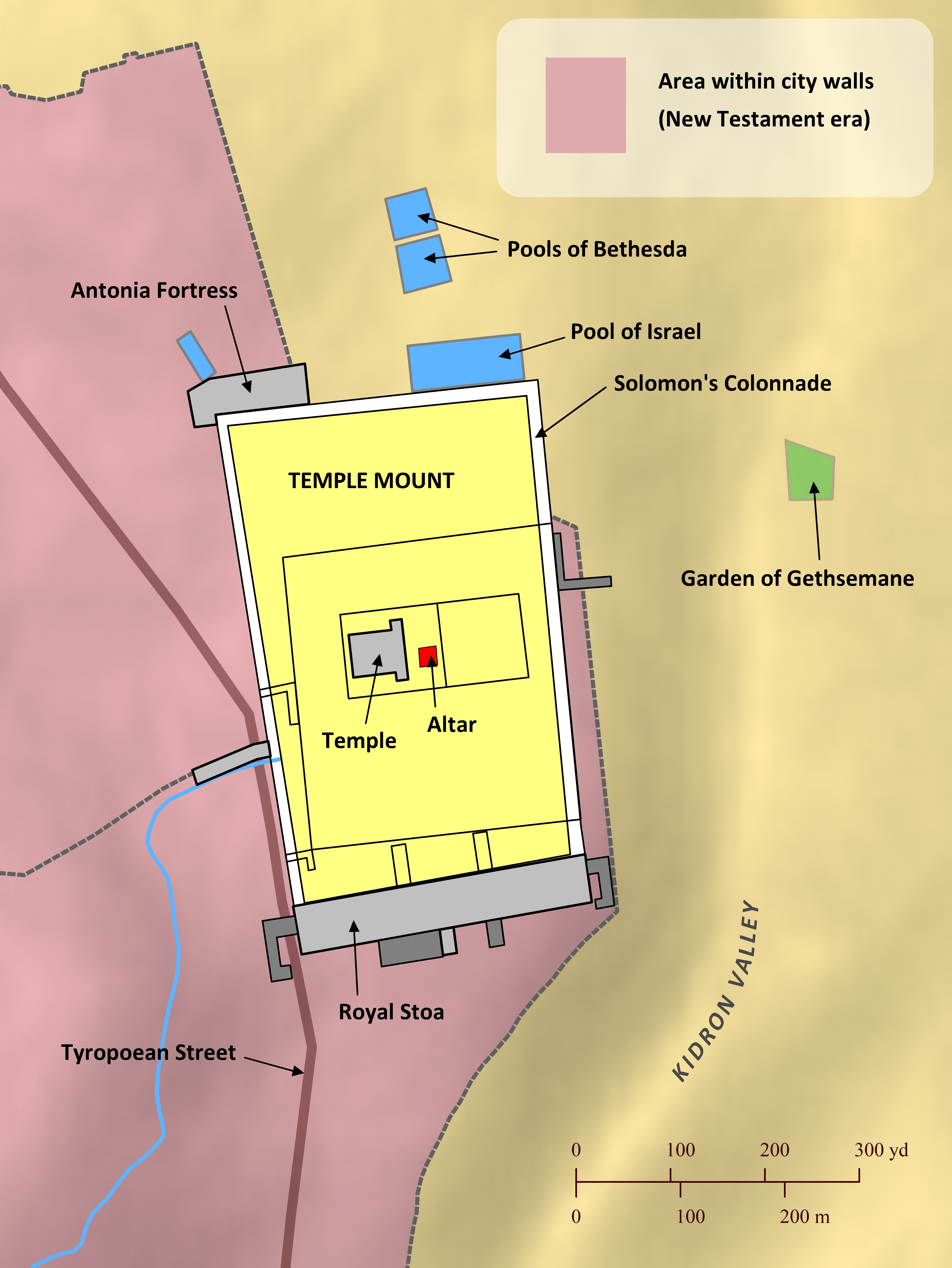Note: This view shows ‘verses’ which are not natural language units and hence sometimes only part of a sentence will be visible—click on any Bible version abbreviation down the left-hand side to see the verse in more of its context. Normally the OET discourages the reading of individual ‘verses’, but this view is only designed as a tool for doing comparisons of different translations—the older translations are further down the page (so you can read up from the bottom to trace the English translation history). The OET segments on this page are still very early looks into the unfinished texts of the Open English Translation of the Bible—please double-check these texts in advance before using in public.
OEB No OEB 1 CHR 21:20 verse available
WEBBE Ornan turned back and saw the angel; and his four sons who were with him hid themselves. Now Ornan was threshing wheat.
WMBB (Same as above)
NET While Ornan was threshing wheat, he turned and saw the messenger, and he and his four sons hid themselves.
LSV And Ornan turns back and sees the messenger, and his four sons [are] with him hiding themselves, and Ornan is threshing wheat.
FBV Ornan was busy threshing wheat. He turned around and saw the angel; and his four sons who were with him went and hid.
T4T While Araunah was threshing some wheat, he turned and saw the angel. His four sons who were with him also saw the angel, and they hid themselves.
LEB Now Ornan was threshing wheat, and Ornan turned and saw the angel, and his four sons with him hid themselves.
BBE And Ornan, turning back, saw the angel, and his four sons who were with him went to a secret place. Now Ornan was crushing his grain.
Moff When Oman turned round, he saw the angel; and his four sons who were with him hid themselves. Oman was threshing wheat;
JPS And Ornan turned back, and saw the angel; and his four sons that were with him hid themselves. Now Ornan was threshing wheat.
ASV And Ornan turned back, and saw the angel; and his four sons that were with him hid themselves. Now Ornan was threshing wheat.
DRA Now when Ornan looked up, and saw the angel, he and his four sons hid themselves: for at that time he was thrashing wheat in the floor.
YLT And Ornan turneth back, and seeth the messenger, and his four sons [are] with him, hiding themselves, and Ornan is threshing wheat.
Drby And Ornan turned back and saw the angel; and his four sons with him hid themselves. Now Ornan was threshing wheat.
RV And Ornan turned back, and saw the angel; and his four sons that were with him hid themselves. Now Ornan was threshing wheat.
SLT And Ornan will turn back and see the messenger; and his four sons with him hiding themselves. And Ornan treading out the wheat.
Wbstr And Ornan turned back, and saw the angel; and his four sons with him hid themselves. Now Ornan was threshing wheat.
KJB-1769 And Ornan turned back, and saw the angel; and his four sons with him hid themselves. Now Ornan was threshing wheat.[fn]
KJB-1611 [fn]And Ornan turned backe and saw the Angel, and his foure sonnes with him, hid themselues. Now Ornan was threshing wheat.
(Modernised spelling is same as from KJB-1769 above, apart from capitalisation and punctuation and footnotes)
Bshps And Ornan turned about, and saw the angell, and his foure sonnes were with him, and hyd them selues: But Ornan was threshing wheate.
(And Ornan turned about, and saw the angel, and his four sons were with him, and hid themselves: But Ornan was threshing wheat.)
Gnva And Ornan turned about, and sawe the Angel, and his foure sonnes, that were with him, hid them selues, and Ornan thresshed wheat.
(And Ornan turned about, and saw the Angel, and his four sons, that were with him, hid themselves, and Ornan thresshed wheat. )
Cvdl But wha Arnan turned him, and sawe the angell (and his foure sonnes with him) they hyd the selues: for Arnan thro?shed wheate.
(But what Arnan turned him, and saw the angel (and his four sons with him) they hid the selves: for Arnan thro?shed wheat.)
Wycl Forsothe whanne Ornam hadde `biholde, and hadde seyn the aungel, and hise foure sones `with hym `hadde seyn, thei hidden hem, for in that tyme he threischide whete in the cornfloor.
(For_certain/Truly when Ornam had behold, and had seen the angel, and his four sons with him had seen, they hidden them, for in that time he threischide wheat in the corn-floor/storage-barn.)
Luth Arnan aber, da er sich wandte und sah den Engel, und seine vier Söhne mit ihm, versteckten sie sich; denn Arnan drosch Weizen.
(Arnan but, there he itself/yourself/themselves turned and saw the angel, and his four sons with him, versteckten they/she/them itself/yourself/themselves; because/than Arnan drosch wheat.)
ClVg Porro Ornan cum suspexisset et vidisset angelum, quatuorque filii ejus cum eo, absconderunt se: nam eo tempore terebat in area triticum.
(Further Ornan when/with suspexisset and had_seen a_messenger/angel, fourque children his when/with by_him, absconderunt himself: for/surely by_him at_the_time terebat in/into/on area triticum. )
RP-GNT No RP-GNT 1 CHR book available
